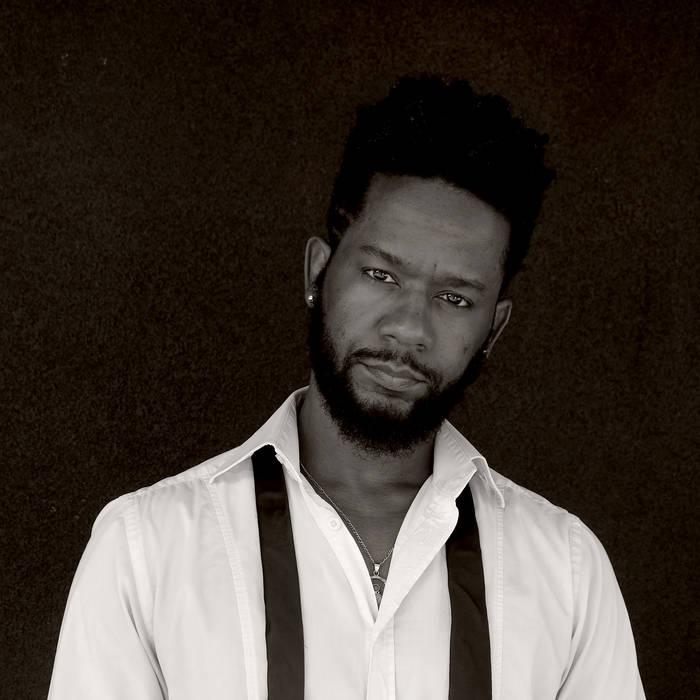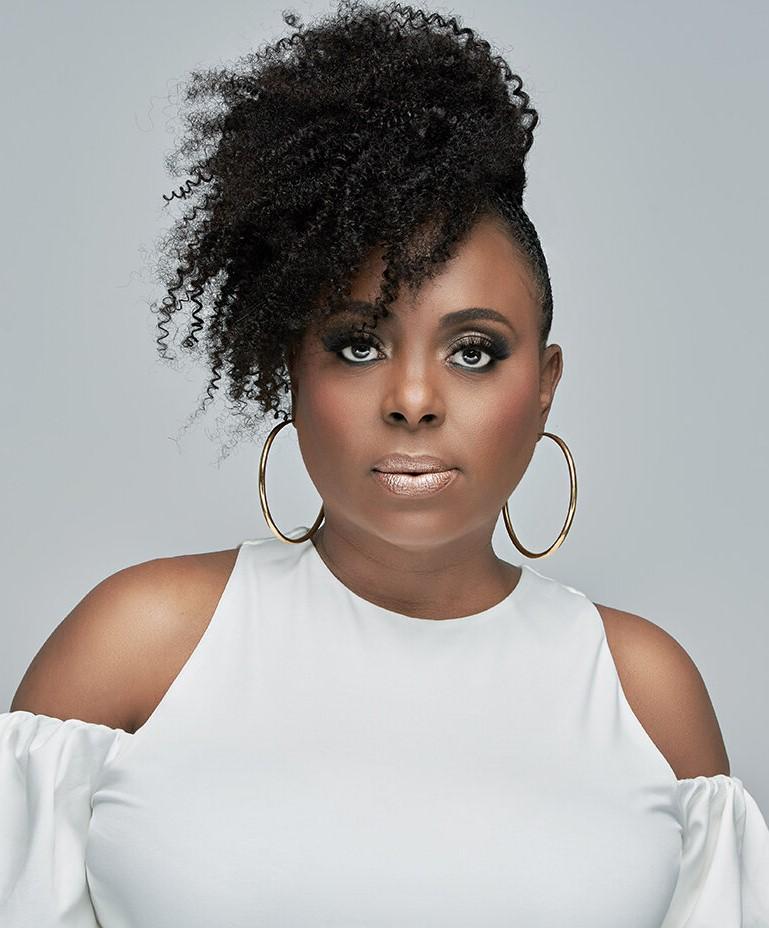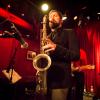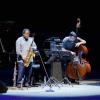
The other week, I was chatting with bassist Ben Williams at the bar at the Tenderloin jazz club Black Cat between sets by vocalist Gretchen Parlato, and he mentioned his recent move to Los Angeles. My ears perked up. The pandemic has upended the lives of so many musicians it’s become commonplace to discover that a well-known player long based in New York City has moved back to his or her U.S. hometown, or to Berlin, Madrid, or Tel Aviv. But Williams, a Washington, D.C. native who’d lived in New York since 2006, said there was something different happening in L.A., and that he was hardly alone. Quickly rattling off more than a dozen other renowned jazz artists now calling the Southland home, he namechecked Robert Glasper, Elena Pinderhughes, Christian Scott, Keyon Harrold, Mark Turner, David Binney, Jonathan Pinson, John Escreet, Justin Brown, and Andrew Renfroe before taking a breath.
Following the road map Williams provided, I talked to numerous musicians who’ve relocated to L.A. in recent years, a surge that seems to have accelerated since the advent of COVID-19. By all accounts the L.A. jazz scene is healthier than it’s been for decades, despite the sore need for more gigs and venues. But that’s part of L.A.’s attraction. There are tremendous opportunities for growth and deep reservoirs of resources to tap into, making the City of Angels a prime destination for ambitious and entrepreneurial artists.
Every player who’s relocated has his or her own story, and for many part of the draw is the same sunny lure that’s attracted winter-bound Easterners for generations. North Bay-raised bassist Zach Moses (formerly known as Zach Ostroff) moved to L.A. a few weeks ago after several years in New York. Gigging mostly on upright bass, he noted that “driving to gigs as opposed to trudging through the snow was a pretty strong selling point.” But the climate isn’t the deal closer. A film composer and producer who also works in pop and hip-hop, he sees L.A. as “an amazing place where all that is happening,” he said. “More and more really incredible musicians are moving here. It’s a one-direction trend line. I feel like being part of a scene is really crucial, and all the opportunities here made it feel a lot more enticing and justifiable as a jazz musician.”
Some of the highest profile players who’ve moved from New York City to L.A., like pianist Gerald Clayton and vocalist Gretchen Parlato, are native Angelenos returning to their roots. Parlato and her husband, drummer Mark Guiliana, moved west from New York City with their young son in 2019 to be close to her family. “I knew in my heart I wanted to settle back in Los Angeles,” Parlato said. “Talking it through with Mark about whether it was the right time, he was ready for it too.”
One explanation for L.A.’s rise as a jazz destination is the catalytic force exerted by the crossover success of saxophonist Kamasi Washington and his West Coast Get Down collaborators like Thundercat, Miles Mosley, and Ronald Bruner Jr. Their pop cultural impact has been exponentially amplified by their association with rap maestro Kendrick Lamar. But there’s a lot more at work than the breakthrough visibility that accompanied 2015’s double whammy of Washington’s unruly double album The Epic and Lamar’s epochal To Pimp a Butterfly. More than a coherent and widely acclaimed community of players, L.A. offers multifarious work opportunities for jazz musicians interested in producing and composing.
Part of what’s changed is that L.A. is now a magnet for young musicians. Though New York remains the undisputed center of the jazz universe, the best and the brightest, like Ben Williams, see a future for themselves outside of Gotham’s orbit. The bassist moved to New York at the age of 22 for graduate studies at Juilliard and quickly established himself as one of the most commanding young musicians on the scene. He won the 2009 Thelonious Monk International Jazz Bass Competition, which led to his debut album for Concord Jazz, State of Art, with a quintet featuring Gerald Clayton. Williams went on to earn a Grammy Award in 2013 as part of the all-star Pat Metheny Unity Band.

In constant demand, Williams was spending most of this time on the road and had just finished a tour with Kamasi Washington when the pandemic shuttered New York City. Embracing the quiet and the opportunity to study, he ended up honing his audio-engineering skills to facilitate work as a producer. Rather than setting him on a new path, the pandemic “pointed me in a direction I was already heading,” said Williams, who settled in Culver City in March 2021.
“I’d been thinking about this move for a while. L.A. is one of those places where every time you come you think, ‘Why don’t I live here?’ I was in New York for 14 years and was all about being in New York, but I’ve been coming out to L.A. a lot for the past 10 or 12 years. I have quite a solid network here already: John Beasley, Terrace Martin, Kamasi, and some guys who moved here just a few years prior, like Gerald Clayton, Kris Bowers, and Justin Brown. They’d wanted me to move to L.A. for a long time. I fell right in.”
Williams’s last album, a soul-steeped, politically engaged jazz-meets-R&B project, I Am a Man, came out in February 2020 and, like so many unfortunately timed releases, was quickly overshadowed by the pandemic. He makes his Yoshi’s debut as a leader Sunday, July 24, with a band largely featuring fellow L.A. transplants, including drummer Jonathan Pinson, guitarist Andrew Renfroe, and pianist Javier Santiago, who was cutting a brilliant path across the Bay Area scene before he was selected for the prestigious L.A.-based graduate program at the Herbie Hancock Institute of Jazz (formerly known as the Thelonious Monk Institute of Jazz). Powerhouse saxophonist Marcus Strickland rounds out the quintet, and Broadway mainstay-turned-L.A. singer-songwriter Syndee Winters performs as a special guest.
Williams and Winters have been collaborating since he moved to L.A., a creative connection that exemplifies “what I love about the city,” Williams said. “There’s such a diverse network. I’ve got friends who are producers, or who mainly tour with pop acts. Guys who are heavy in the jazz scene, and others who compose for film and TV and they just do that. I started seeing Robert Glasper more in L.A. than when we both lived in New York. A few days ago he texted me, ‘Come over to the studio. We’re working on a score.’ I got a chance to play the Oscars just recently.”
Just like Southern California is a land of booms and busts, the L.A. jazz scene’s visibility has waxed and waned over the past century. The early wave of Creole and Black musicians fleeing New Orleans circa 1914 brought the emerging idiom west before it was even known as jazz, planting the emerging style in the rapidly growing metropolis. The Benny Goodman Orchestra sparked the swing era in the summer of ’35 from the Palomar Ballroom near downtown L.A., but the scene was already jumping on Central Avenue, the mainstem of Black Los Angeles where the musical ferment boiled through the end of the 1940s.
Though the 1950s cool jazz sound was equally an East Coast phenomenon, it was strongly associated with the L.A.-centric West Coast scene, tying the beach lifestyle to a lithe sound a decade before the advent of the Beach Boys. While blues-, bebop-, and gospel-steeped players like Hampton Hawes, Curtis Counce, Teddy Edwards, and Harold Land were making enduringly brilliant music in the 1950s and ’60s, living and working on the Left Coast often meant getting left out of the New York-centric jazz conversation.
But many players who came through the jazz orchestras of Stan Kenton, Woody Herman, and Count Basie found stable employment as studio musicians. Black artists often had to fight to get a fair share of the studio work, but pioneering figures like multi-wind player Buddy Collette and composers Benny Carter and Quincy Jones helped kick open doors (while many white film and television composers, like Johnny Mandel, John Williams, Henry Mancini, and Lalo Schifrin, got their start as working jazz musicians).
When I started covering the L.A. jazz scene in the early 1990s, Central Avenue’s creative burst still reverberated as dozens of players who got their start during the 1940s heyday or 1950s afterglow were in prime form, from Gerald Wilson and Buddy Collette to Horace Tapscott, Charlie Haden, and Teddy Edwards. The Crenshaw District’s Leimert Park scene — which emanated from The World Stage, founded by L.A. drum legend Billy Higgins and poet/activist Kamau Daáood — helped nurture a rising generation of jazz artists, including composer, San Francisco bass star, and Healdsburg Jazz Festival Artistic Director Marcus Shelby. The scene was set for Kamasi Washington and his confidants.
The word was out on the musicians’ grapevine well before The Epic landed, attracting rising players like trumpeter Christian Scott (who now goes by Chief Adjuah). The scion of an illustrious New Orleans musical clan, Adjuah has made several extended forays to Los Angeles over the past decade. Though he still considers himself a New Yorker, L.A. has become his main base of operations. With a front row view of the seismic shifts that have tilted the jazz landscape westward, he sees an attitude shift about what it means to be an artist.
“When I was coming up in the ’90s, the idea was you get yourself together and get to New York,” said Adjuah, who plays Yoshi’s June 23–24 with a sextet featuring Bay Area-raised drum phenomenon Elé Howell (who played the SFJAZZ Center with Ravi Coltrane in April). “With this influx of these really great creative improvisers to L.A., what you’re seeing now is that this generation is finally walking away from romanticizing being poor to play music. That’s a systemic design, but they no longer accept having to be in a resource desert, that to learn to express themselves in a certain way you have to slug it out for decades just to be a good jazz musician. The work can take that long, but in terms of being treated in a certain manner, being able to feed yourself, the L.A. scene is more accommodating. It’s less active in terms of live gigs, but there are more branches for people to gravitate to.”
Saxophonist Mark Turner, one of the most influential tenor players to emerge in the 1990s, grew up in Palos Verdes, a tony Los Angeles County enclave. When he left L.A. to attend Boston’s Berklee College of music in 1987, he didn’t intend to come back. But when his wife, a psychiatrist and anthropologist who grew up in Berkeley, was offered a professorship at UCLA, they ended up coming back west. He’d been hearing rumblings on the musicians’ grapevine for the past decade about the rising scene in L.A., “but I’ve got to say I was a little skeptical,” he said. “When guitarist Jeff Parker moved here maybe 10 years ago, I remember thinking why are you going to L.A.? That was my attitude.”
Coming out of the COVID torpor, he’s started playing around the region and has been struck by encountering excellent young musicians who have no evident New York ambitions. While he’s still getting to know the scene, he’s also getting reacquainted with L.A. itself. “Coming back after 35 years, it’s a really different city than when I left, and for the better,” Turner said. “When I left no one lived downtown. There was no downtown city walking culture, and now it’s here. People live downtown! They’re building a subway. It feels more of an international city with a vibe more like New York, just spread out. There’s a lot going on.”
Undergirding the sense of opportunity in the Southland is the steady expansion of the educational infrastructure, with the University of Southern California’s Thornton School of Music and its crosstown rival, the UCLA Herb Alpert School of Music. The California Institute of the Arts (CalArts) has been an oasis for musical visionaries like Charlie Haden, Wadada Leo Smith, and Bennie Maupin and, in 2016, recruited the inventive New York saxophonist/composer Steve Lehman. And Cal State Northridge and Cal State Long Beach have long supported strong jazz programs. It’s become more common for students to graduate from these programs and settle in Los Angeles, like Berkeley-raised tenor saxophonist/composer Hitomi Oba did. Indeed, being a Bay Area jazz fan means getting accustomed to bidding adieu to beloved players, who for generations have headed East looking to make a name for themselves in New York. But losing treasured artists to L.A. stings in a different way, with a mix of pride and disappointment when they get career support that’s not available in the Bay.

Ledisi, who won a 2021 Grammy Award with her self-produced track “Anything for You,” gave up her Oakland digs more than a decade ago and fully blossomed in L.A. by staying true to her love of jazz and R&B. (She plays the Long Beach Jazz Festival Aug. 13 and San Jose Jazz’s Summer Fest Aug. 14.) “I’m so happy I get to be myself, my whole gloriously, quirky, eclectic self,” she told me in an interview before her appearance at the Monterey Jazz Festival last year. “When I’m doing jazz, I sneak in a little blues. When I’m doing R&B, I sneak in a little jazz. I came to Los Angeles because that’s where the producers are, and that’s where things were happening. But all the music programs I was in growing up in [in] New Orleans and the Bay Area were funded by donations, and I remember that. I advocate for the arts, and I spent some of COVID raising funds for MusiCares. The Bay Area taught me that.”
If there’s a silver lining for Bay Area jazz lovers, it’s that artists who move south have every incentive to maintain their Bay Area ties. When I moved to Berkeley in 1996, I was dismayed to realize that L.A. players I saw regularly around the Southland rarely played Bay Area gigs. That’s starting to change. Organist Wil Blades spent two decades building an international reputation in the Bay Area before moving to L.A. in 2019. He’s back in town with his old sparring partner Scott Amendola for a melee at the Freight & Salvage Wednesday, June 23, with Cyro Baptista and Skerik. East Bay saxophonist Howard Wiley is plugged into the West Coast Get Down scene, touring and recording with bassist Miles Mosley. As L.A. rises, the ripples are reaching the Bay.




